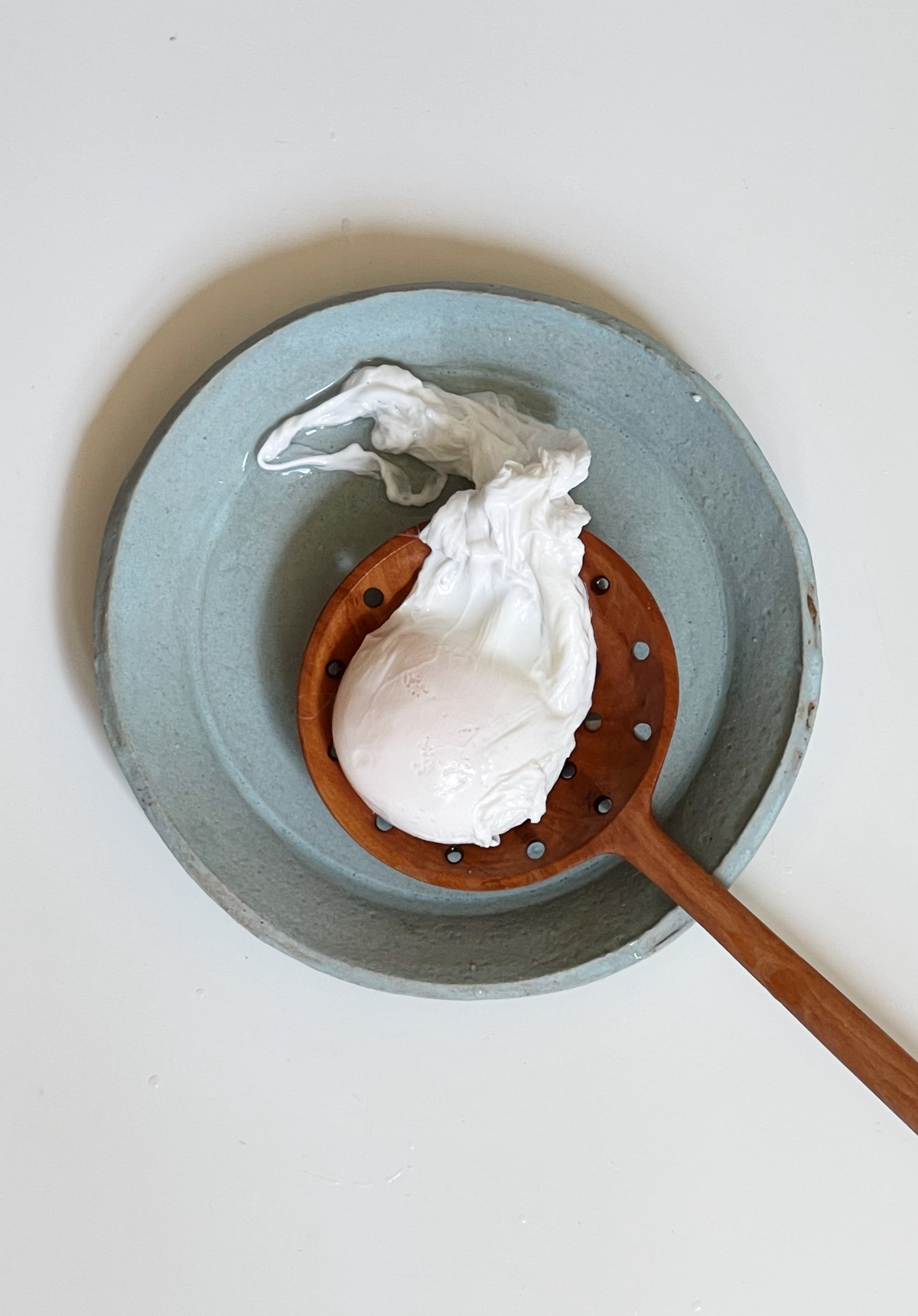
This recipe is an ode to one of the weekend's best simple pleasures, the poached egg—a perfect excuse to break out our hand-carved slotted Skimmer Spoon, and the easiest way to treat yourself and loved ones to a comforting staple. Sent to us as an excerpt from her forthcoming book, Bright Cooking, Camille Becerra shares her tips and tricks for ensuring your eggs maintain their shape and structure from start to finish.
Originally from San Juan, Puerto Rico, Camille grew up in New Jersey before making her way to New York City. For nearly 20 years, Camille has worked as a chef, food stylist, and recipe developer, and has garnered a reputation for her commitment to healthful, local ingredients—creating beautiful, seasonally-focused menus at some of New York's most beloved restaurants. She is a frequent contributor to food-focused publications, and has worked with some of today's leading restaurant developers and designers to create dynamic food programs and experiences that stem from her largely vegetarian, macrobiotic background.
Bright Cooking will be released in spring 2023 from Chronicle Books.
You become very good at making the perfect poached egg when you are a brunch restaurant cook. At the height of my brunch days I’d marvel at how beautiful it was to watch this suspended moment in time that’s captured by water and air. As the gentle bubbles float up from the bottom of the pan, the egg whites solidify, are captured and sculpted by the bubbles, and transformed into a perfect drop shape.
Grab a 5-inch-deep pot or deeper and fill it with water. I can poach up to 2 dozen eggs at a time with a big enough pot. However, to achieve the sculptural drop shape, the egg needs room as they plunge into the water and leave a long trail of whites.
Bring the water to a boil. It's vital to achieve the perfect simmer, not too gentle so that the egg sinks to the bottom and sticks there but also not too rapid where the egg bops around and potentially bursts. Play around with the heat to get comfortable controlling the boil.
Add a splash of distilled vinegar (approximately 1 tablespoon per cup of water) and a 5-finger pinch of salt to the water. You can also add a tablespoon of turmeric to turn the eggs a cheery yellow or poach them in red wine for a moody hue.
When the simmer environment is right, give the water a slight stir. Tap the egg onto a surface to crack it slightly, holding it as close to the simmering water as you can, slowly open the eggshell, allowing the egg to slip out gently and dive into the pot.
If you are a beginner or if you would prefer to have more control, I suggest you crack the eggs into a small cup before slipping them into the water.
Check the bubbles and adjust the heat. Think of it as using a car's gas pedal to go faster or slower until you’re at the perfect speed.
Set a timer for two minutes from the time they are in, and carefully remove them with a slotted spoon once the timer is up.
Being mindful of the temperature, tap the area around the yolk to make sure they are the doneness you like and that the whites have fully coagulated.
Serve on top toast, porridge, grits, risotto, grain bowl, or polenta.


